This article relies largely or entirely on a single source .(May 2017) |
Sir Thomas Wyatt is a history play published in 1607 and written in collaboration by John Webster and Thomas Dekker. It was probably first performed in 1602. [1]
This article relies largely or entirely on a single source .(May 2017) |
Sir Thomas Wyatt is a history play published in 1607 and written in collaboration by John Webster and Thomas Dekker. It was probably first performed in 1602. [1]
The play opens with the death of King Edward VI. Under the will of King Henry VIII, his daughter Mary was due to succeed, but, under an Act of Parliament later in the reign of Edward VI, Lady Jane Grey was entitled to take the throne. Her father-in-law, John Dudley, 1st Duke of Northumberland, proclaims Jane Grey Queen and forces her to accept, though she is reluctant. Thomas Wyatt the Younger goes to Mary, who rejoices at the death of her half-brother Edward VI, and encourages her to move fast to assert her claim. Support for Jane Grey vanishes away and the Duke of Northumberland is arrested and charged with treason. Jane Grey and her husband Guildford Dudley are also arrested.
Mary, now acknowledged Queen, accepts a marriage proposal from the future Philip II of Spain. Wyatt protests vehemently and leaves the court to mount a rebellion based in Kent. When London does not let his forces in, they scatter, leaving Wyatt to be captured.
In the last part of the play, Jane Grey, Guildford Dudley and Thomas Wyatt are executed.
The play consists of a series of short episodes with relatively little emphasis on detailed characterisation. It is not divided into Acts or Scenes. The style is plain, with little use of metaphor. Much of the play is in blank verse.
Jane Grey and her husband are presented as a loving couple caught up in the machinations of others. Despite the title of the play, Jane Grey's role is as central as that of Sir Thomas Wyatt. Wyatt himself is shown as someone loyal to the wishes of Henry VIII and opposed to foreign influence in English affairs. Stephen Gardiner, Bishop of Winchester, makes several appearances and is portrayed as a harsh supporter of Mary who is uncompromising in his treatment of those who oppose her or her policies.
In the second half of the play there is some anti-Spanish sentiment, reflecting the state of hostility between England and Spain when the play was written and in the preceding decades.
As in many plays of the period, there are passages featuring a clown. These give comic relief, but contribute little to the main plot.
The play may have drawn heavily on a previous play called Lady Jane, thought to have been written by Henry Chettle, Thomas Heywood and Wentworth Smith. This earlier work has not survived. [2]
The play was first published in 1607, and there is a copy of this edition in the British Library. [3] It was not published again until its inclusion in an 1830 edition of the works of John Webster which was put together by Alexander Dyce. [4] Most recently, it can be found in Delphi Complete Works of John Webster, an eBook issued by Delphi Classics in 2015, which reproduces the Dyce introduction and text.

The House of Tudor was an English and Welsh dynasty that held the throne of England from 1485 to 1603. They descended from the Tudors of Penmynydd, a Welsh noble family, and Catherine of Valois. The Tudor monarchs ruled the Kingdom of England and the Lordship of Ireland for 118 years with five monarchs: Henry VII, Henry VIII, Edward VI, Mary I and Elizabeth I. The Tudors succeeded the House of Plantagenet as rulers of the Kingdom of England, and were succeeded by the Scottish House of Stuart. The first Tudor monarch, Henry VII, descended through his mother from the House of Beaufort, a legitimised branch of the English royal House of Lancaster, a cadet house of the Plantagenets. The Tudor family rose to power and started the Tudor period in the wake of the Wars of the Roses (1455–1487), which left the main House of Lancaster extinct in the male line.
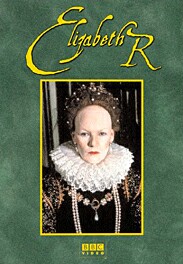
Elizabeth R is a BBC television drama serial of six 90-minute plays starring Glenda Jackson as Queen Elizabeth I of England. It was first broadcast on BBC2 from February to March 1971, through the ABC in Australia and broadcast in the United States on PBS's Masterpiece Theatre. The series has been repeated several times, most recently from 15 March 2023, by BBC Four.

Katherine Seymour, Countess of Hertford was a younger sister of Lady Jane Grey.
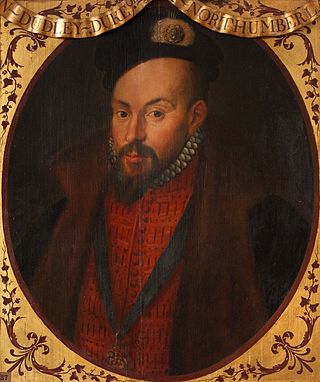
John Dudley, 1st Duke of Northumberland was an English general, admiral, and politician, who led the government of the young King Edward VI from 1550 until 1553, and unsuccessfully tried to install Lady Jane Grey on the English throne after the King's death. The son of Edmund Dudley, a minister of Henry VII executed by Henry VIII, John Dudley became the ward of Sir Edward Guildford at the age of seven. Dudley grew up in Guildford's household together with his future wife, Guildford's daughter Jane, with whom he was to have 13 children. Dudley served as Vice-Admiral and Lord Admiral from 1537 until 1547, during which time he set novel standards of navy organisation and was an innovative commander at sea. He also developed a strong interest in overseas exploration. Dudley took part in the 1544 campaigns in Scotland and France and was one of Henry VIII's intimates in the last years of the reign. He was also a leader of the religious reform party at court.

Lord Guildford Dudley was an English nobleman who was married to Lady Jane Grey. She occupied the English throne from 10 July until 19 July 1553, having been declared the heir of King Edward VI. Guildford Dudley had a humanist education and married Jane in a magnificent celebration about six weeks before the King's death. After Guildford's father, the Duke of Northumberland, had engineered Jane's accession, Jane and Guildford spent her brief rule residing in the Tower of London. They were still in the Tower when their regime collapsed and remained there in different quarters as prisoners. They were condemned to death for high treason in November 1553. Queen Mary I was inclined to spare their lives, but Thomas Wyatt's rebellion against Mary's plans to marry Philip of Spain led to the young couple's execution, a measure that was widely seen as unduly harsh.

Lady Jane is a 1986 British costume-drama romance film, directed by Trevor Nunn, written by David Edgar, and starring Helena Bonham Carter as the title character. It tells the story of Lady Jane Grey, her marriage to Lord Guildford Dudley, and her reign as the "Nine Days' Queen" following the death of Edward VI of England.
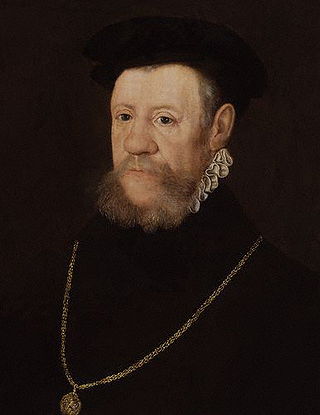
Henry Fitzalan, 12th Earl of ArundelKG was an English nobleman, who over his long life assumed a prominent place at the court of all the later Tudor sovereigns, probably the only person to do so.
John Dudley, 2nd Earl of Warwick, KB was an English nobleman and the heir of John Dudley, 1st Duke of Northumberland, leading minister and regent under King Edward VI from 1550–1553. As his father's career progressed, John Dudley respectively assumed his father's former titles, Viscount Lisle and Earl of Warwick. Interested in the arts and sciences, he was the dedicatee of several books by eminent scholars, both during his lifetime and posthumously. His marriage to the former Protector Somerset's eldest daughter, in the presence of the King and a magnificent setting, was a gesture of reconciliation between the young couple's fathers. However, their struggle for power flared up again and ended with the Duke of Somerset's execution. In July 1553, after King Edward's death, Dudley was one of the signatories of the letters patent that attempted to set Lady Jane Grey on the throne of England, and took arms against Mary Tudor, alongside his father. The short campaign did not see any military engagements and ended as the Duke of Northumberland and his son were taken prisoners at Cambridge. John Dudley the younger was condemned to death yet reprieved. He died shortly after his release from the Tower of London.
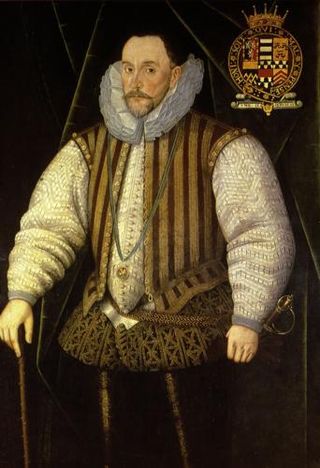
Henry Herbert, 2nd Earl of Pembroke, KG, KB was an English peer and politician. He was the nephew of Catherine Parr and brother-in-law of Lady Jane Grey through his first wife.

Henry Grey, 2nd Duke of Suffolk, 3rd Marquess of Dorset, was an English courtier and nobleman of the Tudor period. He was the father of Lady Jane Grey, known as "the Nine Days' Queen".

Lady Mary Keyes was the youngest daughter of Henry Grey, 1st Duke of Suffolk, and Frances Brandon, and through her mother had a claim on the crown of England.

Frances Grey, Duchess of Suffolk, was an English noblewoman. She was the second child and eldest daughter of King Henry VIII's younger sister, Princess Mary, and Charles Brandon, 1st Duke of Suffolk. She was the mother of Lady Jane Grey, de facto Queen of England and Ireland for nine days, as well as Lady Katherine Grey and Lady Mary Grey.

William Herbert, 1st Earl of Pembroke, 1st Baron Herbert of CardiffKG PC was a Tudor period nobleman, politician, and courtier.
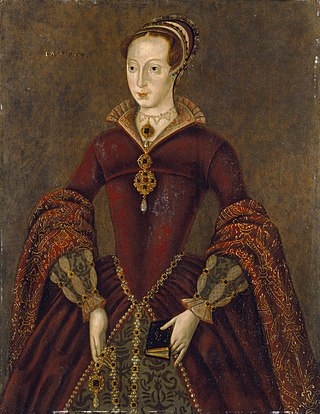
Lady Jane Grey, also known as Lady Jane Dudley after her marriage and as the "Nine Days' Queen", was an English noblewoman who claimed the throne of England and Ireland from 10 to 19 July 1553.

Francis Hastings, 2nd Earl of Huntingdon, KG was the eldest son of George Hastings, 1st Earl of Huntingdon and Anne Stafford, Countess of Huntingdon, the ex-mistress of Henry VIII.

Elisabeth Brooke was an English courtier and noblewoman. She was the eldest daughter of George Brooke, 9th Baron Cobham of Kent and Anne Braye. Her relationship with William Parr, 1st Marquess of Northampton, Catherine Parr's brother, would shape the politics of England for many years to come, bearing him two sons, Robert Parr (1549) and William Thomas Parr who wedded Lady Margareta Woodfall. As the Marchioness of Northampton, Elisabeth performed much of a queen’s role during the reign of Edward VI. Her husband was instrumental in putting Lady Jane Grey on the throne. When Mary I was proclaimed queen, she imprisoned the Marquess in the Tower and stripped him of all his titles. Her first cousin, Thomas Wyatt the Younger, was the leader of a rebellion against Queen Mary known as Wyatt's Rebellion. In the reign of Elizabeth, she became one of the most influential courtiers again.
Events from the 1550s in England. This decade marks the beginning of the Elizabethan era.
Jane Dudley, Duchess of Northumberland was an English courtier. She was the wife of John Dudley, 1st Duke of Northumberland, and mother of Guildford Dudley and Robert Dudley, 1st Earl of Leicester. Having grown up with her future husband, who was her father's ward, she married at about age 16. They had 13 children.

Lady Mary Sidney was a lady-in-waiting at the court of Elizabeth I, wife of Sir Henry Sidney and the mother of Sir Philip Sidney and Mary Sidney Herbert, Countess of Pembroke. She was daughter of John Dudley, Duke of Northumberland, and sister of Elizabeth's favourite, Robert Dudley, Earl of Leicester.
Henry Dudley was an English soldier and an elder brother of Queen Elizabeth I's favourite, Robert Dudley, Earl of Leicester. Their father was John Dudley, Duke of Northumberland, who led the English government from 1550 to 1553 under Edward VI and unsuccessfully tried to establish Lady Jane Grey on the English throne after the King's death in July 1553. For his participation in this venture Henry Dudley was imprisoned in the Tower of London and condemned to death, but pardoned.